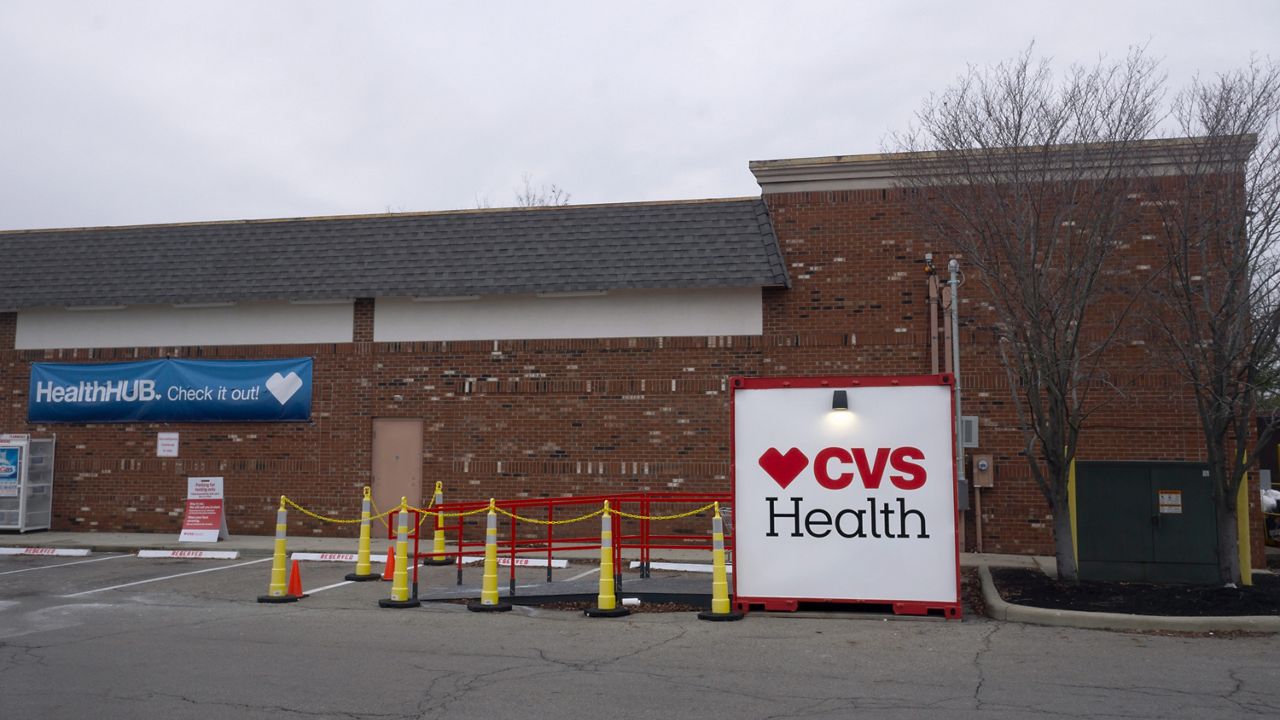COLUMBUS, Ohio — Gov. Mike DeWine shared a vaccine plan Friday that shows Ohio receiving more than 650,000 vaccine doses by the end of the year — desperately needed relief as the state reports a surging COVID-19 death toll.
“We are not holding half of it back,” DeWine said. “If you held them back, you’d just be sitting there with them. And that would be the worst thing that could do. We have an obligation to get them out as quickly as we can. We also have an obligation to be able to come back with a second vaccine."
Here are the numbers for Ohio's delivery expecations:
For the first shipment, around Dec. 15, Ohio expects to receive 98,000 doses from Pfizer. Most of these doses, 88,725, will be administered by CVS and Walgreens in high congregate care settings, for staff and for people residing in the facilities.
On Dec. 22, the state expects a large shipment from Moderna of 201,000 doses. DeWine said these doses will be administered by hospitals and health departments. Hospitals will vaccinate health care workers on the frontline of the COVID-19 fight, while health departments will race to get the state’s first responders immunized. Home health care workers are also part of this distribution group.
The last week of December will bring 148,000 Pfizer doses and 89,000 more Moderna doses, DeWine announced. The numbers from the second and third Pfizer shipments are "tentative" and subject to adjustment, he said.
“This continues to be fine-tuned, and this will be a work in progress,” DeWine said. “The federal government has made clear that we will not know for sure what these numbers are until we are notified in that week.”
Ten hospitals have been selected to administer initial doses of the vaccine. These hospitals were selected because they have the capacity to store vaccine doses at ultra cold temperatures. It was not clear how many health departments, if any, would be ready to go on Dec. 22.
Both vaccines use novel mRNA technology, which allowed the companies to develop them in record time. But the style of vaccine creates distribution challenges because doses must remain frozen.
When the Pfizer vaccine is shipped, it will arrive in a “shipper” on dry ice. The vaccine can only be held at room temperature for five minutes before it “falls” and becomes unusable. Once the vaccine comes off the dry ice, it can be kept in a refrigerator where it's good for five days.
The vaccine arrives in a dry form. To administer doses, a health care worker will “make" the vaccine, drawing up a liquid and diluting the vaccine to an administrable form. Once the vaccine is reconstituted and diluted, the doses have to be administered within six hours, or else they must be discarded.
Ohio reported 10,114 new COVID-19 cases Friday, the highest report in more than a week, and the fourth highest daily report ever. The seven-day case average was 8,165, an astronomical increase since September when the surge started.
Friday’s report showed 129 deaths, the third worst day so far. The seven-day average of deaths has risen to 77. The state reported 392 new hospitalizations Friday, as the total number of hospitalizations dipped slightly to 5,092 patients. There were 1,208 patients in ICU beds and 714 on ventilators. The positivity rate was 15.5% as of Dec. 2.
Gov. Mike DeWine said he will take the vaccine at the first moment when it is his turn. It was unclear exactly what tier of vaccine recipients the governor might fall under.
DeWine said the state's vaccine plan and its priorities are consistent with those that have been given by the Centers for Disease Control and Prevention.
He said the state’s vaccine plan has three objectives: 1) Save lives, 2) Slow the spread of the virus, and 3) Protect health care workers.
The governor said Ohio's goal is to cover the most vulnerable people as quickly as possible, focusing on “people who are in a situation where they're more likely to get it and who, if they do get it, are more likely not to have good outcomes.”
The first tier, 1A, includes health care personnel and long-term care facility residents. The second tier, 1B, is essential workers (education, food service, utilities , and transportation). The next tier, 1C, is seniors older than 65 and people with high-risk medical conditions.
Tier 1A is about 21 million people nationwide. The country’s Operation Warp Speed chief says the U.S. will distribute 40 million doses for 20 million people by year end. That would mean tier B could get doses in January.
DeWine shared granular detail about how tier 1A breaks down.
There are three subgroups, he said. First, health care workers and personnel who are in the care of COVID-19 patients. Second, EMS responders. Third is a category he described as “vulnerable individuals who live together in close proximity, and those who care for them.”
This third subgroup includes pychiatritic hospitals, congregate living mental health facilities, and veterans homes.



